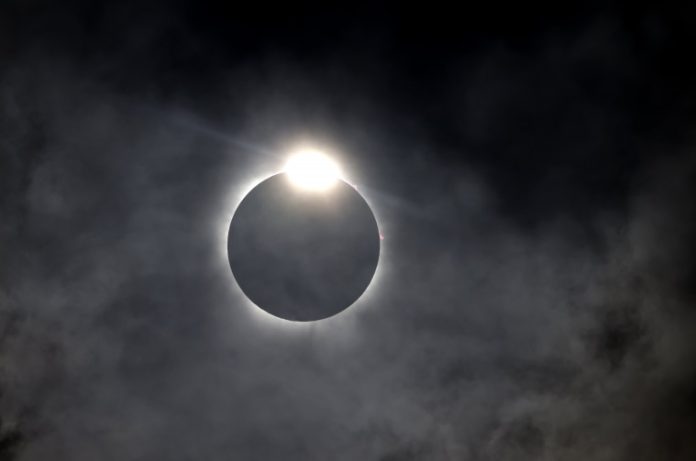Eclipse mania swept across Mexico, the US and Canada as the Moon passed in front of the Sun, eclipsing daylight. Nearly everyone in North America was guaranteed at least a partial eclipse, weather permitting.
It was the largest eclipse audience on the continent: several hundred million people living in or near the path of the shadow, as well as scores of non-natives.
Clouds shrouded much of Texas as the total solar eclipse began its diagonal path over land, starting along the nearly clear Pacific coast of Mexico and heading toward Texas and 14 other US states before entering the North Atlantic near Newfoundland.
Arkansas and northeastern New England were the best places in the US. New Brunswick and Newfoundland in Canada also looked promising.
The show began in the Pacific Ocean before noon EDT. As the darkness of the total eclipse reached the Mexican resort town of Mazatlan, the faces of onlookers were lit only by the screens of their mobile phones.
In Georgetown, Texas, hundreds of people gathered on the lawn of Southwestern University cheered as the sky cleared just in time for spectators to see the phenomenon. Georgetown resident Susan Robertson said:
“We are really lucky. Even with the clouds it is kind of nice because when it clears up it is like wow.”
The uncertainty hanging over the precipice added to the drama. But the overcast sky in Mesquite, near Dallas, didn’t faze Erin Frohneberger, who was in town on business and brought along her eclipse-viewing glasses. She said:
“We are always just rushing, rushing, rushing. But this is an event that we can just take a moment, a few seconds that it’s going to happen and embrace it.”
A festival near Austin ended early Monday because storms were forecast for the afternoon. Festival organisers urged everyone to pack up and leave.
Sarah Laneau of Westfield, Vermont, woke up at 4 a.m. on Monday to drive her 16-year-old niece to nearby Jay Peak Ski Resort, where she would be able to see the eclipse after a morning of skiing. She said:
“This will be a first from me and an experience of a lifetime.”
Tourists with shopping carts, prams, coolers and lawn chairs flocked to Niagara Falls State Park under overcast skies. Park officials expected the popular spot overlooking the falls to be crowded.
During Monday’s total eclipse, the moon slipped right in front of the sun, completely covering it. The resulting twilight, in which only the Sun’s outer atmosphere or corona is visible, will be long enough for birds and other animals to fall silent and planets, stars and perhaps even comets to pop to the surface.
Unsynchronised darkness lasts up to 4 minutes and 28 seconds. That’s almost twice as long as during the eclipse on the US coast seven years ago because the moon is closer to Earth. It will be another 21 years before the US sees another total solar eclipse of this magnitude.
The eclipse path, about 115 miles (185 kilometres) wide this time, covers several major cities including Dallas, Indianapolis, Cleveland, Buffalo, New York, and Montreal. An estimated 44 million people live within the path, with several hundred million more living within a 200-mile (320 kilometre) radius.
